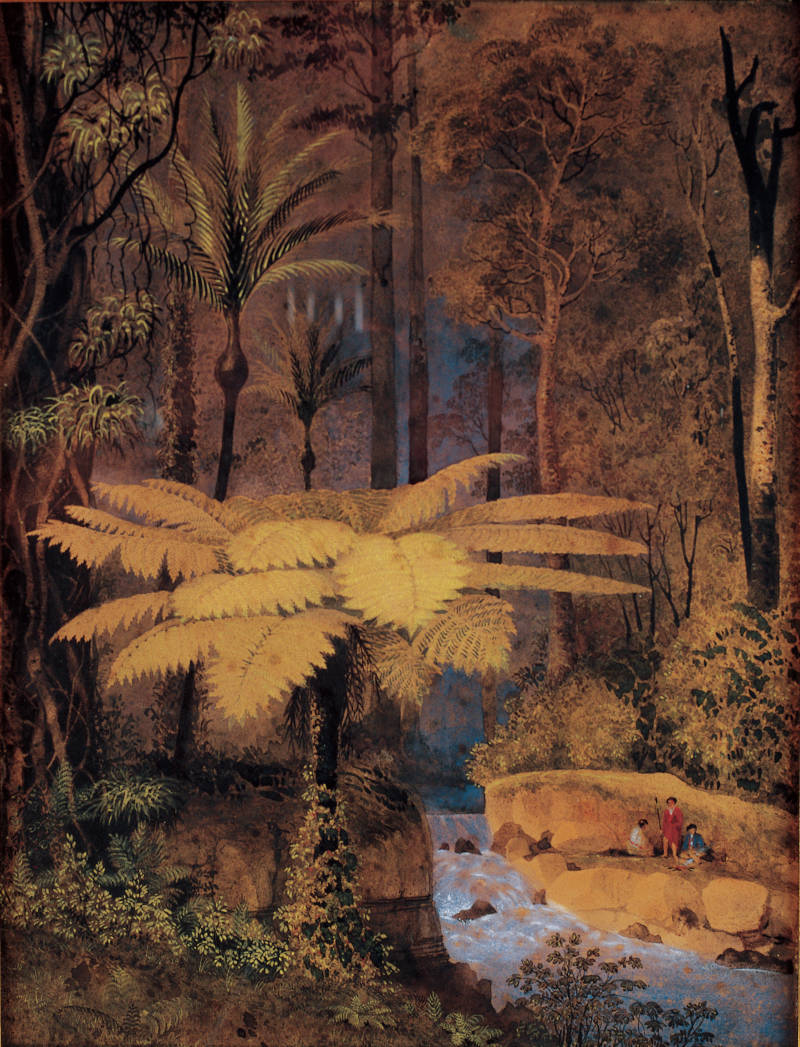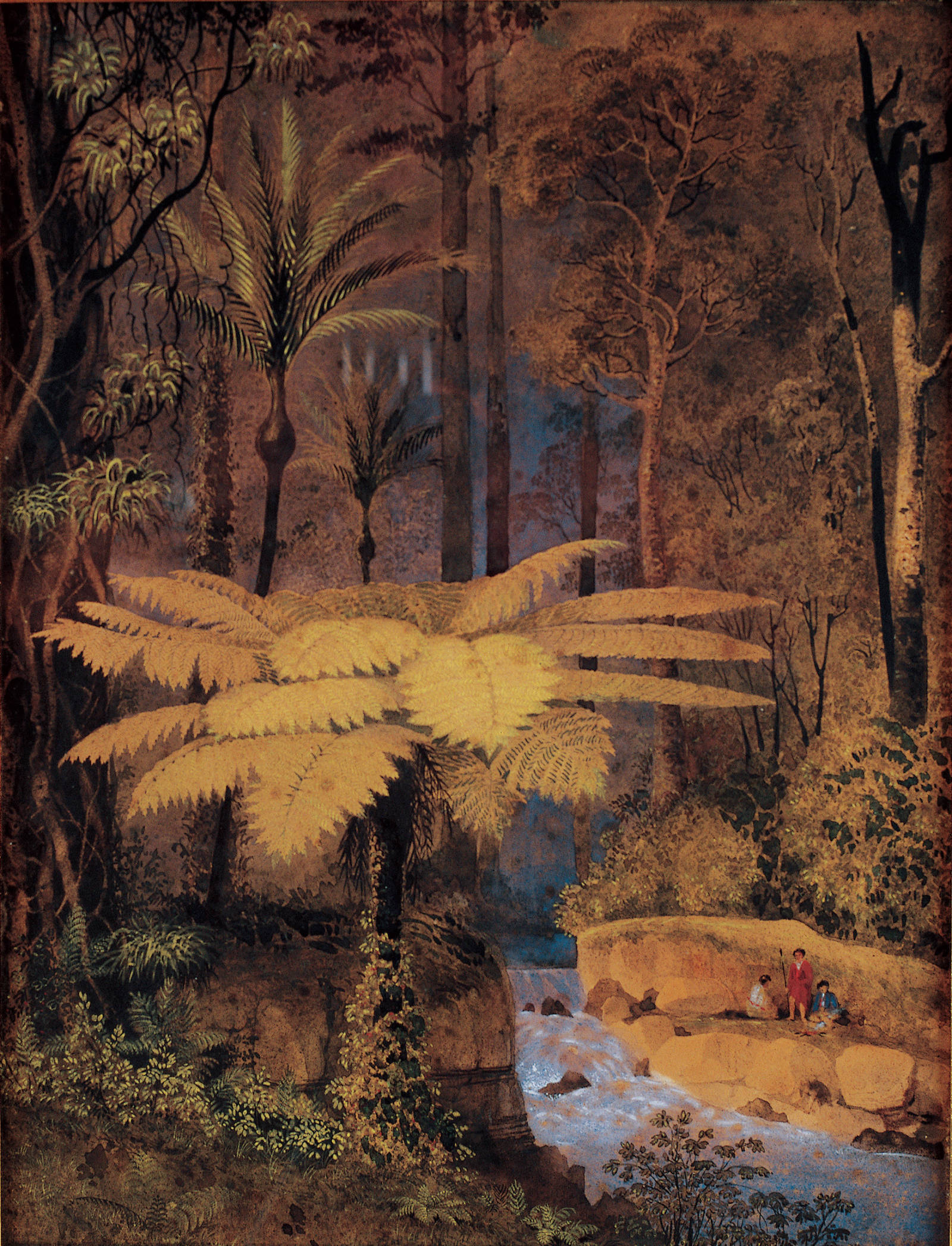BELL, Francis Dillon;
New Zealand Bush
c.1845
Watercolour on paper
442 x 337mm

The following two texts were written for Te Huringa/Turning Points and reflect the curatorial approach taken for that exhibition.
Peter Shaw
Born in France, where his father was a merchant and British consul in Bordeaux, Bell grew up bilingually, educated in the classics and in painting and music. Such an education was considered the basis for the life of a cultivated gentleman. In 1839, Edward Gibbon Wakefield, his father’s cousin, found the young Bell a position with the New Zealand Company in London. By 1841, he was acting secretary for the company, taking responsibility for the Whakatū Nelson area.
Bell arrived in Aotearoa in 1843, where he was sent to buy land from Māori, first in Tāmaki Makaurau and then in Whakatū. In 1847, he was involved in Wairarapa purchases and thereafter worked for the company in Ngāmotu New Plymouth. In 1850, when the New Zealand Company folded, Sir George Grey appointed him Commissioner of Crown Lands and a member of the Legislative Council. In 1853, he was elected to the Wellington Provincial Council and in 1855 won a seat in the House of Representatives.
A fluent Māori speaker, and more experienced in Māori affairs than most of his contemporaries, Bell became Minister of Native Affairs in the Domett administration in 1862. He supported the invasion of the Waikato in 1863, visiting Australia to recruit military settlers. When Domett’s administration was replaced by that of Sir William Fox, a former rival, Bell retired to his sheep station near Palmerston, Otago.
In 1871, Bell was returned to Parliament in the Mataura seat, which he had held since 1866. Knighted in 1873, he served as speaker of the House of Representatives until 1875. He retired in Otago in 1891.
A fine calligrapher as well as a painter, his works were exhibited at the 1865 Dunedin Exhibition with others by fellow politicians Fox and J. C. Richmond. This painting’s meticulous detailing exhibits a calligraphic finesse and Ruskinian botanical accuracy. At the same time, it displays the artist’s feeling for the gloomily romantic beauty of a forest in a strange land.
Jo Diamond
This painting’s featured bush setting is intriguing, given the artist’s familiarity with Māori custom and language. Bell was a learned government official whose various roles directly impacted on Māori customary attachments to land. His social status is less obvious in this picture than his urge to record a detailed idyllic scene.
Botanically-based observations dominate; the three small Māori figures included in the composition are shown as bystanders overpowered by the forest. There is the sense here that picturesque concerns are more dominant than the artist’s recorded involvement in colonialist land acquisition. His capacity to capture this landscape in paint does, nevertheless, mirror the political power he actually had during his lifetime, a power that witnessed a wholesale cultural decline with the imposition of laws that denied Māori customary land tenure.
The artist appears to excuse himself from such political realities by privileging spectacular, untouched nature over human nature. The dense bush-clad land did not, in fact, overawe him as this painting might suggest, his social standing becoming increasingly privileged, particularly when compared to that of many Māori. This point does not detract from his efforts to learn Māori culture and language during his lifetime. However, life in the bush and elsewhere in Aotearoa was not idyllic and equitable for all who dwelt there, this becoming dramatically obvious once colonisation began its inevitable progress.
Exhibition History
Tirohanga Whānui: Views from the Past, Te Kōngahu Museum of Waitangi, 15 April to 15 September 2017
Te Huringa/Turning Points: Pākehā Colonisation and Māori Empowerment, Sarjeant Gallery Te Whare o Rehua, Whanganui, 8 April to 16 July 2006 (toured)

